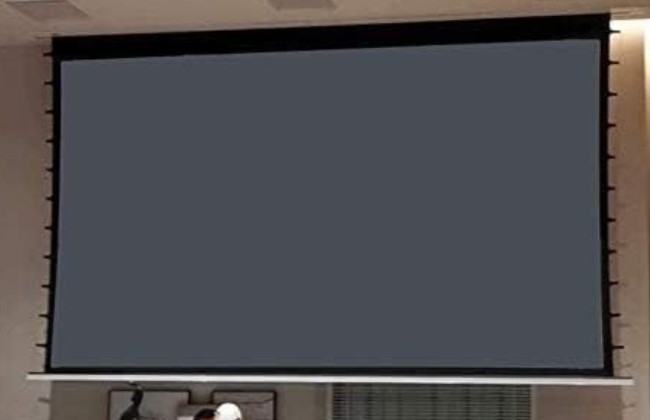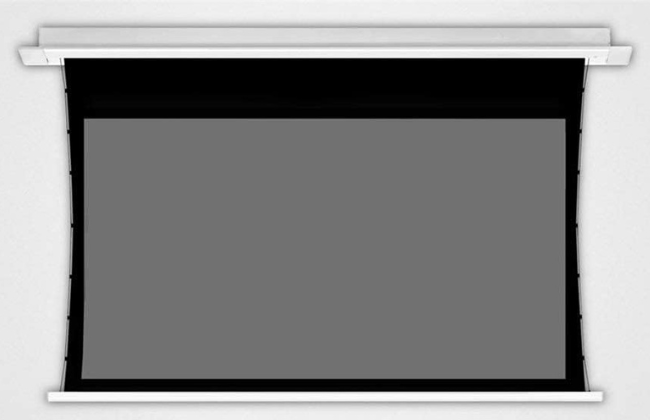In-Ceiling Installation: This screen is installed in a recessed enclosure within the ceiling, making it nearly invisible when retracted.
What Is It?
- Tab Tension Mechanism: The screen has tabs or tensioning cables along its edges that pull the screen taut, ensuring a smooth and wrinkle-free surface for high-quality image projection.
Uses of an In-Ceiling Tab Tension Projection Screen
- Home Theaters: Provides a clean and professional look by hiding the screen when not in use, which is ideal for home entertainment rooms where aesthetics are important.
- Conference Rooms: Useful in business environments where the screen needs to be unobtrusive and only revealed when needed for presentations.
- Classrooms: Allows for a tidy appearance in educational settings, with easy deployment when the screen is required for teaching or presentations.
- Auditoriums and Large Venues: In larger spaces where a retractable, high-quality screen is needed but must be discreet when not in use.
How to Use It
Installation:
- Mounting the Enclosure: Install the ceiling-mounted enclosure into the ceiling cavity according to the manufacturer’s instructions. Ensure that it is level and securely fastened.
- Connecting the Screen: Connect the screen to any required electrical or control systems if it has motorized features.
Operation:
- Deploying the Screen: Use the control system (which may be a remote control, wall switch, or integrated home automation system) to lower the screen from its ceiling enclosure.
- Adjusting the Screen: The tab tension mechanism will automatically pull the screen taut. For manual adjustments, follow the manufacturer’s guidelines to ensure the screen is perfectly flat.
Maintenance:
- Cleaning: Regularly clean the screen surface to remove dust and prevent any buildup that could affect image quality.
- Checking Tension: Periodically inspect the tab tension system to ensure it is functioning correctly and that the screen remains smooth.
Benefits of an In-Ceiling Tab Tension Projection Screen
Aesthetic Appeal: Concealed in the ceiling, the screen maintains a clean and unobtrusive appearance when not in use, enhancing the overall look of the room.
Space Efficiency: Saves wall and floor space, making it ideal for rooms with limited space or where a sleek design is desired.
High-Quality Projection: The tab tension mechanism ensures a smooth, flat surface for optimal image quality, reducing wrinkles and distortions.
Convenience: The motorized version allows for easy and quick deployment with the push of a button, integrated into home automation systems for seamless control.
Durability: The ceiling-mounted design protects the screen from physical damage and dust when retracted.
Versatility: Suitable for various environments, including home theaters, professional offices, and educational settings, where a discreet and high-quality projection solution is needed.
Conclusion
An in-ceiling tab tension projection screen combines functional benefits with a sleek design, making it a popular choice for environments where aesthetics and image quality are paramount. By understanding how to use and maintain the screen properly, you can ensure it delivers excellent performance while enhancing the visual appeal of your space.

